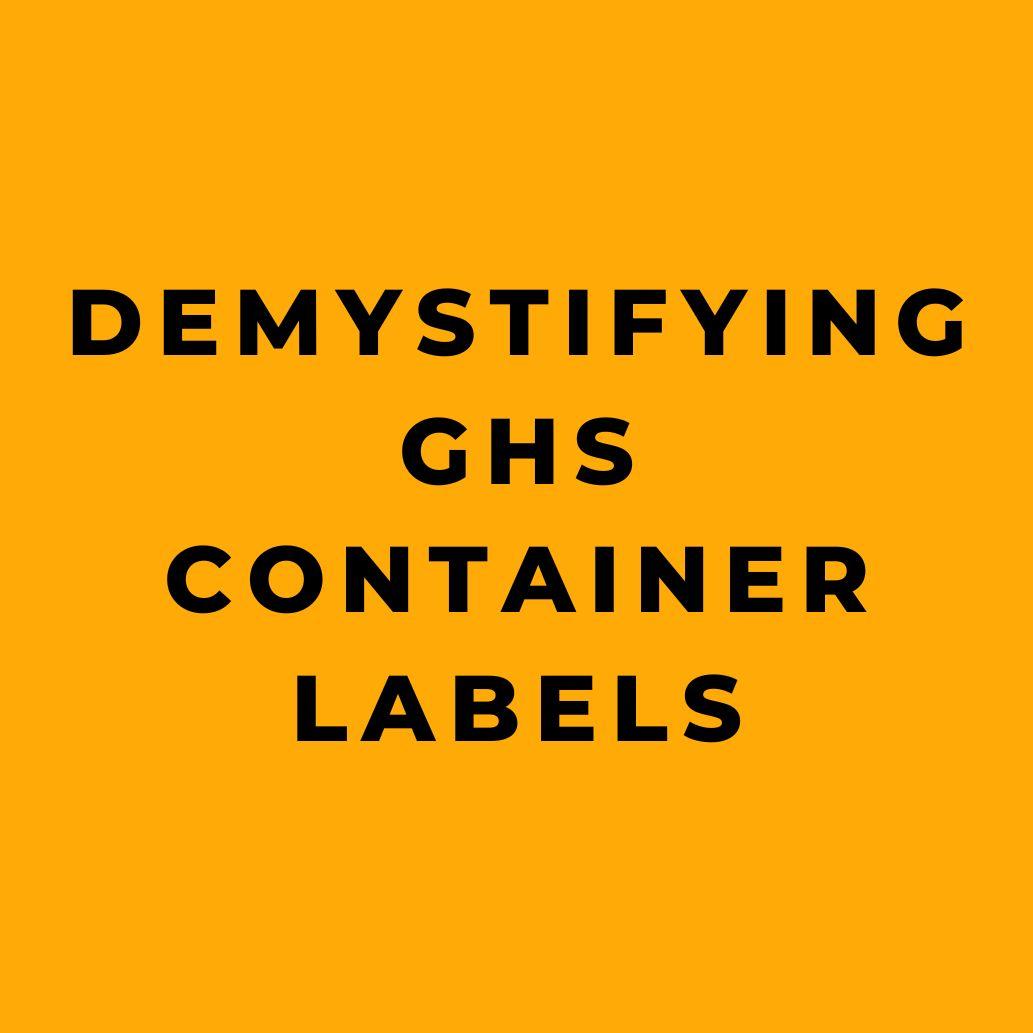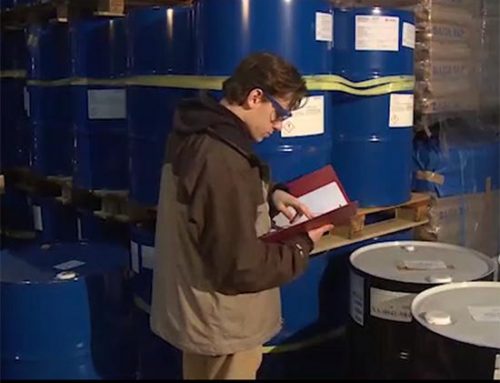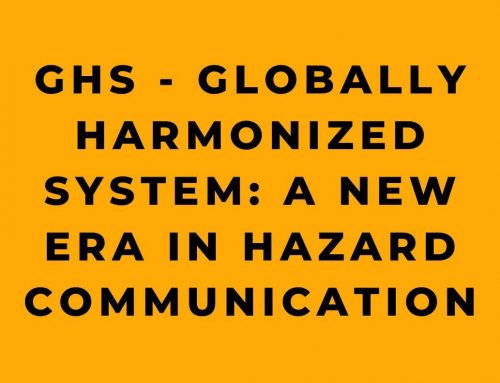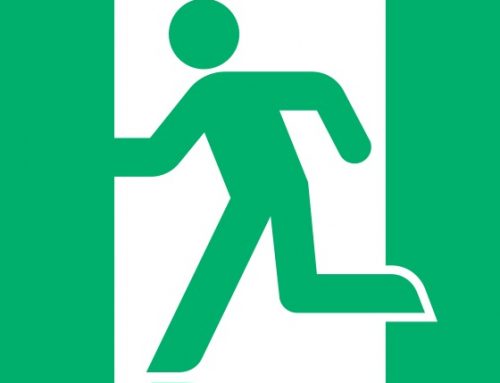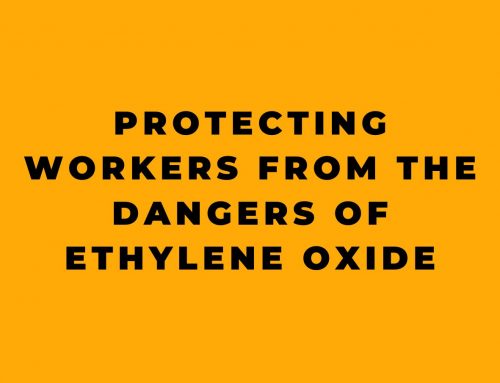Chemical hazards in the workplace can pose serious risks to employees if not properly handled. To promote safety, OSHA integrated the Globally Harmonized System (GHS) into its Hazard Communication Standard (HAZCOM) to standardize chemical classification and hazard communication on labels and safety data sheets. This article summarizes key information from an online OSHA training course on GHS container labels so workers can easily identify hazards and handle chemicals safely.
The Origins of the Globally Harmonized System
The original OSHA Hazard Communication Standard gave chemical suppliers flexibility in classifying hazards and communicating safety information. This resulted in inconsistent label formats that caused confusion for workers. To address this, in 2012 OSHA integrated the United Nations’ Globally Harmonized System into the Hazard Communication Standard to standardize hazard classification and communication globally.
OSHA’s Performance-Based Hazard Communication Standard
The original Hazard Communication Standard adopted by OSHA in 1983 took a “performance-based” approach. It informed chemical manufacturers what hazard information needed to be conveyed on labels but allowed flexibility in how this was formatted. As a result, an array of labeling systems emerged, requiring workers to understand multiple formats. This caused confusion, especially when handling unfamiliar chemicals in emergencies. OSHA determined a standardized system was needed to enable quick hazard identification.
The Quest for Global Standardization
OSHA sought to create a standardized system for classifying hazards and communicating safety information on labels and safety data sheets globally. This would improve comprehension, safety and trade across borders. They found the solution in the Globally Harmonized System of Classification and Labeling of Chemicals (GHS).
How GHS Addresses U.N. Chemical Management Goals
The U.N. created GHS to meet the goals of Agenda 21, an international agreement on hazardous chemical management aiming to:
- Enhance worker safety by improving comprehension of hazards through standardized communication on labels and safety data sheets
- Promote safe transport and use of chemicals globally through consistent classification and labeling
- Facilitate international trade by harmonizing standards across borders
- Reduce need for duplicative testing and evaluation of chemicals by taking a synergistic approach
- Avoid creating technical barriers to trade while protecting people and the environment
GHS protects workers, the public and the environment while enabling safe chemical management and trade worldwide.
The GHS “Purple Book” and Ongoing Refinements
The original Globally Harmonized System document, known as the “Purple Book”, was adopted in 2002 after extensive consultation with experts globally. It establishes a voluntary system for standardizing chemical classification, labeling and safety data sheets. OSHA integrated key elements into the Hazard Communication Standard in 2012. The GHS continues to be updated by the U.N. as classification criteria, labeling and other provisions are refined.
GHS Standardizes Chemical Classification, Labeling and Safety Data Sheets
The original OSHA Hazard Communication Standard gave chemical manufacturers flexibility in classifying hazards and conveying safety information. This resulted in inconsistent labeling formats that caused confusion. To address this, OSHA integrated GHS in 2012 to standardize:
- How chemicals are classified into physical, health and environmental hazard categories
- Labeling requirements including standardized pictograms, signal words, hazard statements and precautionary information
- The format and content of safety data sheets
GHS Provides Consistent, User-Friendly Communication of Chemical Hazards
A key goal of GHS is to communicate chemical hazard information clearly and consistently through:
- Pictograms: Visual symbols that convey physical, health and environmental hazards at a glance
- Signal Words: “Danger” for more severe hazards and “Warning” for less severe hazards
- Hazard Statements: Standard phrases that describe hazard types and severity
- Precautionary Statements: Standard phrases advising how to handle chemicals safely
This standardized format enables workers globally to quickly identify chemical hazards on labels and take appropriate precautions, improving comprehension and safety.
GHS Organizes Chemicals into Hazard Classes Represented by Pictograms
A core element of GHS is classifying chemicals into physical, health and environmental hazard categories. GHS defines 9 hazard classes depicted in pictograms:
- Flame: Flammables, pyrophorics, self-heating substances and emitters of flammable gases
- Exploding Bomb: Explosives, self-reactives and organic peroxides
- Flame Over Circle: Oxidizers that intensify fire
- Gas Cylinder: Gases under pressure
- Corrosion: Skin and eye corrosives and hazards to metals
- Skull and Crossbones: Acute (severe short-term) toxins
- Health Hazard: Carcinogens, respiratory sensitizers, reproductive toxins and more
- Exclamation Point: Irritants, skin sensitizers and narcotics
- Environment: Aquatic toxins and hazards to ozone
These easy-to-recognize pictograms help workers quickly identify chemical hazards.
GHS Container Labels Convey Key Safety Information
GHS established a standardized labeling format to communicate:
- Product Identifier: Chemical name or trade name
- Signal Word (“Danger” or “Warning”)
- Hazard Statement (standard phrases describing hazard type and severity)
- Precautionary Statement (standard phrases advising safe handling)
- Supplier Information: Name, address and phone number
This structured format enables workers globally to efficiently find safety information on labels.
Hazard Statements Help Identify Chemical Hazards
Hazard statements are standard phrases describing a chemical’s hazards based on its classification. Some examples:
- “Causes severe skin burns and eye damage” (corrosives)
- “May cause respiratory irritation” (respiratory irritants)
- “Suspected of causing cancer” (carcinogens)
Hazard statements enable consistent communication of hazards across workplaces and borders.
Precautionary Statements Provide Critical Safety Advice
Precautionary statements advise proper handling, storage, transport and disposal using standardized phrases like:
- “Do not handle until all safety precautions have been read and understood” (safe handling)
- “Store locked up in a well-ventilated place” (safe storage)
- “Avoid release to the environment” (safe disposal)
This advice helps workers safely handle chemicals.
Label Supplier Information for Safety Data Sheets
GHS labels must include the chemical manufacturer or distributor’s name, address and phone number to enable workers to contact them for safety data sheets and hazard information.
GHS Flexibility for Non-Hazardous Products
For non-hazardous products, GHS allows flexibility. Labeling elements like pictograms and hazard statements can be omitted. Only the product identifier and supplier information are required.
Workplace Chemical Safety Depends on GHS Knowledge
GHS container labels provide vital visual cues and safety information for workers handling hazardous chemicals. Recognizing GHS pictograms, signal words and hazard statements enables quick identification of chemical hazards so appropriate precautions can be taken. Regular training is key to maintaining worker comprehension and promoting safe chemical management.
Conclusion
The Globally Harmonized System has revolutionized the landscape of chemical safety, providing a standardized language for hazard communication. As you can see, understanding GHS container labels and safety data sheets is a critical component for ensuring a safe workplace. But it’s one thing to read about these intricacies and quite another to truly master them. If you’re looking to elevate your team’s safety protocols and ensure that everyone can effortlessly decode and act upon these critical safety markers, then you’re ready for the next step in your journey toward achieving unparalleled safety standards. Keep reading to discover a tailored solution designed to transform your understanding into mastery.
Uncover the Secret Language of Chemical Safety: Mastering GHS Container Labels with Our Full-Length Interactive Courses
The Problem You Didn’t Know You Had
You’re an expert in your field, fully committed to worker safety and compliance. You’ve followed OSHA’s Hazard Communication Standard to the letter. But what if that isn’t enough? Mislabeling, inconsistencies, and a myriad of confusing formats are not only risky but could be potentially deadly. The original OSHA standards were lenient, and that has led to an alarming discord in chemical labeling. And in a high-risk environment, confusion is the enemy of safety.
The Breakthrough You’ve Been Waiting For
OSHA harmonized with the United Nations’ Globally Harmonized System, the Gold Standard of chemical safety management. Think of it as the universal language of hazard communication. One that not only bridges workplaces but countries. And Our Full-Length Interactive Courses are your Rosetta Stone to mastering this universal language.
Why You Can’t Afford to Ignore This
Let’s cut to the chase. Mistakes in chemical handling don’t just risk fines or operational downtime; they endanger lives. Every second lost to decoding an inconsistent label can be critical. With international trade in chemicals skyrocketing, and legislation continuously evolving, the risks of maintaining the status quo are higher than ever.
What’s Inside Our Full-Length Interactive Courses
- Decipher Pictograms: Understand the 9 core hazard classes represented by globally recognized pictograms, from flammables to aquatic toxins.
- Master Signal Words: Know when a “Danger” is more severe than a “Warning.”
- Decode Hazard Statements: Translate standard phrases into actionable insights, whether it’s “Causes severe skin burns” or “Suspected of causing cancer.”
- Follow Precautionary Steps: Implement standardized safety protocols that remove guesswork and enhance safety measures.
- Navigate Safety Data Sheets: Get through the labyrinth of paperwork with clarity and confidence.
Proof That It Works
The U.N. created GHS to fulfill the global agenda for hazardous chemical management. Its goals are ambitious—enhanced worker safety, facilitation of international trade, and environmental protection. And it’s continuously refined by the U.N., making it a living, breathing system you can rely on. With Our Full-Length Interactive Courses, you’re not just meeting current standards; you’re future-proofing your safety measures.
Transform Safety, Transform Lives
Don’t just manage risks—eliminate them. Enroll in Our Full-Length Interactive Courses today, and turn your workplace into a sanctuary of safety and compliance. Because every worker deserves to come home safely. And with Our Full-Length Interactive Courses, they will.
Click the link below to see a free demo of the course:


